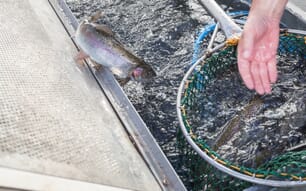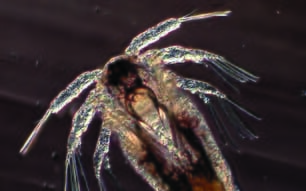The development has also been a source of employment in entities of the country where this productive activity is carried out, said Dr Genoveva Ingle de la Mora, a researcher under the Ministry of Agriculture, Livestock, Rural Development, Fisheries and Food (SAGARPA).
The project manager explained that the photo-period is a technological process by which it has allowed trout to reproduce outside its usual breeding season, allowing aquaculturists to have availability of trout eggs throughout the year.
By increasing or decreasing hours of daylight, used to simulate the summer or winter, it is possible to advance or delay the spawning periods of trout. This is done in a room of photo-period where artificial light is applied, Dr Ingle de la Mora said in a visit to the Aquatic Center "Tatakany" in Jilotzingo, Mexico State.
She said that the project in its pilot phase was successfully applied in the aquaculture center "El Zarco" located in the state of Mexico and spread to the production unit "Tatakany" which has led to other entities trout producers (Hidalgo, Puebla, Chihuahua and Michoacan) requested advice from INAPESCA to adopt the technique of reproduction.
The researcher noted that another benefit generated by the technology of the photo-period is the reduction in the importation of trout eggs, which has encouraged domestic production of the species.
She stressed that the amendment to the reproduction process also facilitates the entrenchment of producers in their communities because they generate profitable employment alternatives that promote their economy. In addition to ensuring the availability of the species and meeting the demand of food throughout the year.
In Mexico, November to February is the usual breeding season for farmed rainbow trout, she said.
Meanwhile, researcher for INAPESCA, Magdalena Dominguez Machian, noted that the Institute will allocate $50 million to strengthen the infrastructure facilities and promote aquaculture genetic improvement of farmed species, among which is the trout, snapper fish, yellow and blue abalone, tilapia, and whitefish, among others.
She said that with these resources considered in the Programme Support and Infrastructure Investment in equipment, component Aquatic Genetic Resources System will create five genetic nuclei (whose location is under study) that will allow the improvement of the species.
The trout are grown in 16 of the Republics, among the most productive are the state of Mexico, which accounts for 68 per cent, Puebla, 18 per cent; Michoacn, with 16 per cent, Durango, three per cent and Chihuahua and Hidalgo with two per cent.
This programme, he noted, promotes the reproduction of species of biological or economic importance to food production and at the same time, improve profitability and competitiveness of agriculture, as well as the quality of life for aquaculturists.
New Technology Increases Trout Production
MEXICO - Photo-period technology, created by the National Fisheries Institute (INAPESCA), has allowed for the increase of the reproduction of trout eggs aquaculture development through out the year.




